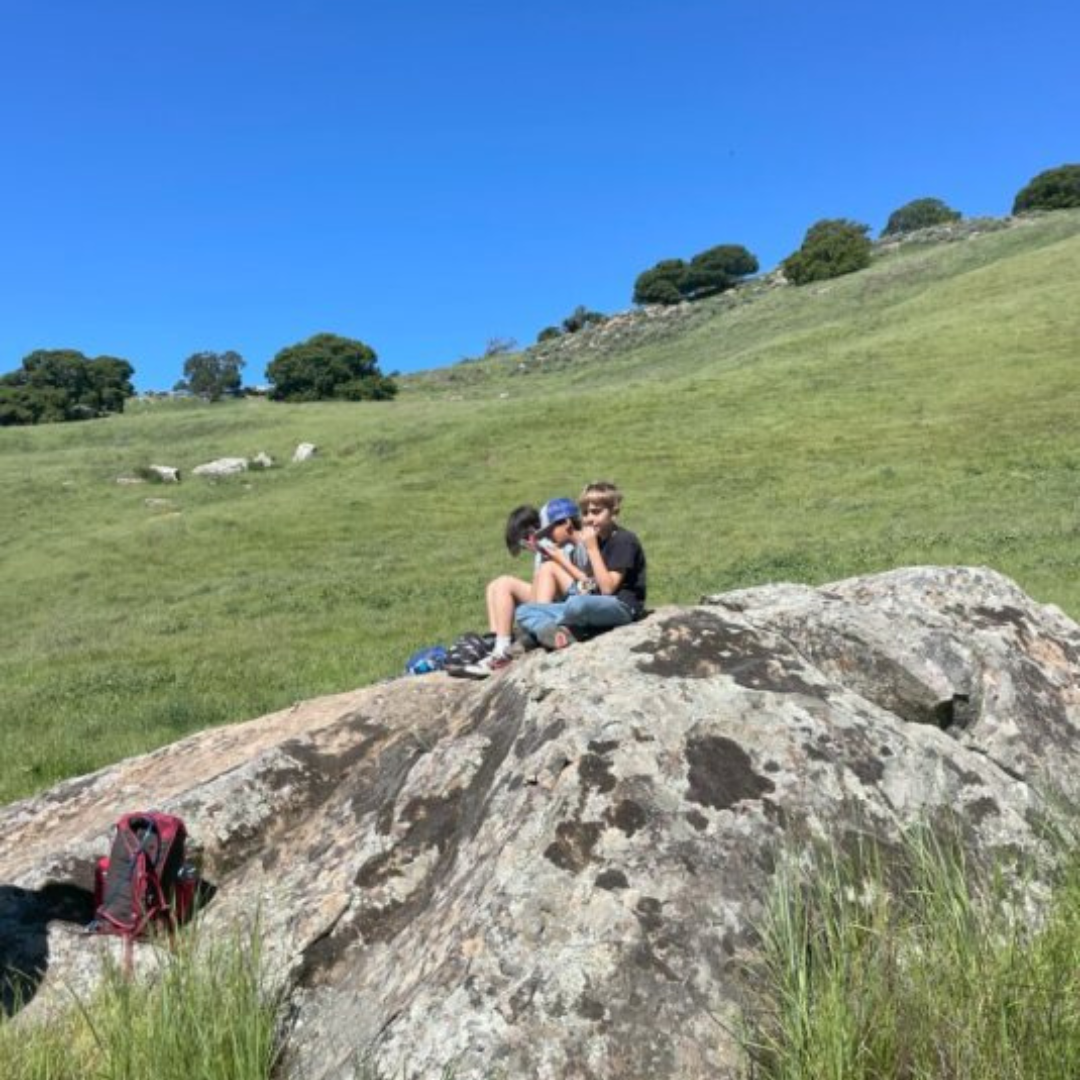The History of Brushy Peak
By Ranger Gilbert
July 2024 Valley Wilds Article
.png?ixlib=rb-1.1.0&w=2000&h=2000&fit=max&or=0&s=7061c9fd038c407a267e9e6d27f5f467)
Introduction to Brushy Peak
Looking at the rolling hills in Livermore's Northeast region, one hill rises above the surrounding land, speckled with rock outcroppings with shallow caves and seasonal vernal pools. You may notice that the hill is mostly rolling grassland except for a thick cluster of buckeye trees and oak trees that crown the highest point at 1,702ft (about twice the height of the Empire State Building).
Today, this hill is known as Brushy Peak, and for thousands of years, it has been a place of beauty, safety, and spiritual power.
Native Tribes and Sacred Grounds
The first people to walk among these amazing stone gardens were native tribes: Bay Miwok, Valley Yokuts, and Ohlone. Gravesites and other artifacts confirmed that native California Indians were in this area 2,500 years ago. It is believed that these tribes considered Brushy Peak a sacred place where the gods would rest while the people of the tribes meditated, performed ceremonial rituals, and gathered medicinal plants.
While of incredible cultural and religious significance, it is believed that native tribes did not inhabit the peak. This idyllic period lasted for hundreds of years.
Joaquin Murietta and the Outlaw Era
In the early 1850s, the notorious outlaw Joaquin Murietta, wanted for robbing and killing several people, was seeking shelter and was said to have used Brushy Peak as a hideout. Murietta and his gang watched over the area that is now known as Altamont Pass, robbing unsuspecting miners as they returned from gold fields and taking any valuables they had.
Legend says a California Ranger was assigned to track down Joaquin Murietta--dead or alive--and brought in his head to collect the bounty.
Although Murietta was believed to have been killed, his legend was so famous that sightings of him in the area continued into the next century.
John Elliot and Ranching
In 1865, a rancher named John Elliot farmed and ranched the land near Brushy Peak. John loved the area so much that in 1911, his final wish was to have his body entombed in one of the wind caves that can still be seen today.
Social Gatherings and Preservation

As Europeans settled the valley, Brushy Peak began to take on a new role. Between the 1900s and 1940s, Sunday afternoon dances and picnics were conducted at Brushy Peak. A dance platform was constructed with shelter for the band.
Popular local bands would hike to the peak to hear and decide whether to resolve the dispute. By the 1940s, the growing population and vandalism concerns led the property owners to block the public use of Brushy Peak.
Modern Conservation Efforts
In 1994, the Livermore Area Recreation and Park District purchased 507 acres of land, including the peak. Preserving this natural wonder undisturbed while still making it accessible to the public has been challenging.
Concerns over endangered and threatened species, ensuring the safety of visitors, and accessing staging areas in private property and locked parkland mean that this part of the preserve is only open to guided tours. The East Bay Regional Park District has acquired 1,100 acres of land on the peak's south side, which borders the LARPD land, creating 1,600 acres (about twice the area of Central Park in New York City) of open space parkland.
The two agencies work together, and both sections of land are now called the Brushy Peak Regional Preserve. It opened in 2005, affording a wealth of new recreational opportunities for residents as they wonder at the pristine beauty of this gem of the valley.
Tours and Public Access
Brushy Peak tours are offered to the public by LARPD in the Spring and Fall.
For a private tour anytime throughout the park, call the LARPD ranger office at (925) 960-2400 for more information.

